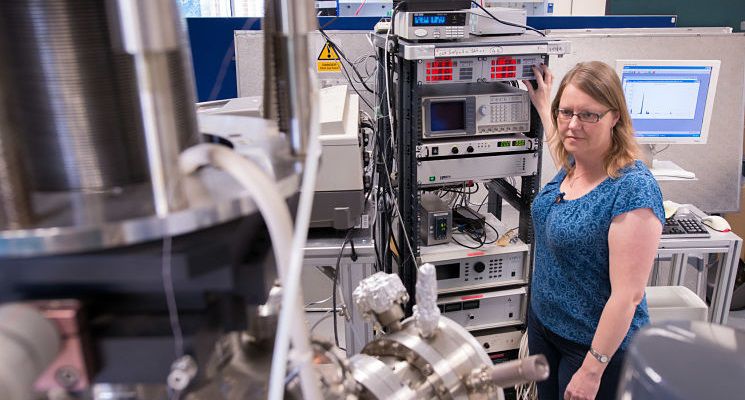How planets are formed
Sussex academic Professor Wendy Brown is using astrochemistry to investigate how chemical reactions help create planets and stars. She explains how she is doing this and the impact her work is having.

There are lots of molecules present in space. Some of them we might consider as pre-biotic species. These are things that go on to make things like amino acids and some of the basic building blocks of life.
Hydrogen was the first molecule that astronomers thought could be made on the surface of a dust grain. When bonds are formed between atoms, a lot of energy needs to be passed on. However, in space there isn’t anything for hydrogen to collide with to pass on energy. Astronomers examined images captured by the Hubble telescope which showed the presence of dust in space, and suggested that hydrogen molecules could be formed by expelling energy into the surface of those dust grains.
We’re now looking at ‘bigger’ molecules like glycolaldehyde, which is a precursor to sugar. So sugar is effectively in space. With it being so cold in space (around minus 250 degrees), all these molecules are ice. This icy ‘soup’ of different molecules on the surface of dust grains can be processed by UV radiation (from the sun or other sources), which results in molecules breaking apart into more reactive bits which go on to make other pre-biotic species.
Here at Sussex, we can simulate the conditions of space in the lab using graphite as model dust grains and then process the molecules using UV radiation, heat or electron irradiation. We work with Engineering academics to examine how electron irradiation has affected the ice systems of Europa (a moon of Jupiter). We can then use standard techniques to analyse the molecules and identify the species.
I fell into astrochemistry. I was always a surface chemist but I had the expertise to help colleagues who were looking at how molecules formed in space. And now I’m involved with a large consortium that will be one of the first groups to have observation time with the James Webb Space Telescope to look for ices, a hugely exciting project that will help us to understand what we’re seeing in greater depth.
The dream scenario is an experiment to prove that you could make amino acid in the conditions of space. This would tell us more about how it was formed and the very origins of life.
Find out more about Wendy’s research.
Undergraduate students can get involved in Wendy’s research in the lab through our Chemistry MChem and summer research placements.
Undergraduate Chemistry courses at Sussex:
- Chemistry BSc (Hons)
- Chemistry MChem
- Chemistry (with an industrial placement year) MChem
- Chemistry with Summer Research Placements MChem